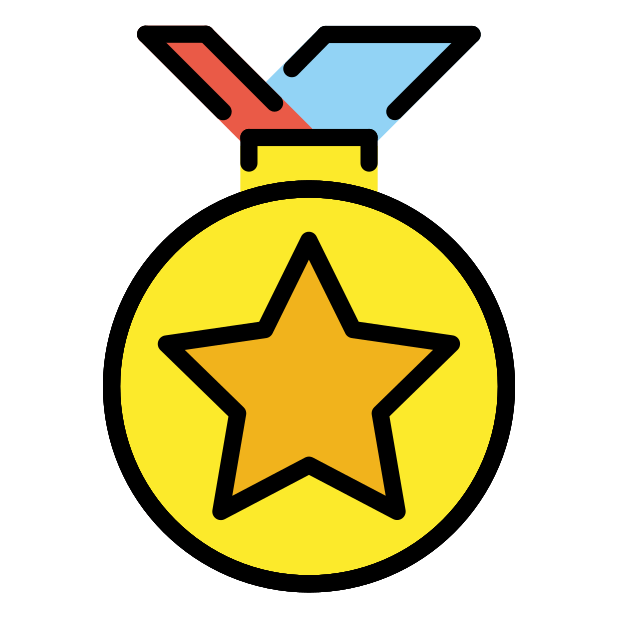-
Posts
2,457 -
Joined
-
Last visited
Everything posted by Zaine
-
In schools that teach the same style, especially when those schools are linked by organization, I think the argument for maintaining previous rank is perfectly valid. I see no reason why one student who does JKA Shotokan should not maintain their rank when joining another JKA Shotokan school to further their education. Of course, I would expect that they be required to prove their skill level in whatever way is appropriate. Usually, attending a few classes with the new dojo gives the instructors all the information they need on whether the student is telling the truth about their previous rank. Outside of these situations, however, I see no reason that any instructor of a different system should be expected to agree to allow someone transfer their rank to a new system. I have a Nidan in Matsumura-Seito Shorin Ryu, but when I began Shobayashi Ryu I took a white belt. I did this because I am not a Nidan, or even a Shodan, in Shobayashi Ryu. I have a command of the basics and the kata were easy for me to adapt to despite the differences. However, the belt and rank for Shobayashi represents my education in Shobayashi. It didn't take away my training in Matsumura-Seito, nor did I get partnered with people far below my skill level when needed. Rank is merely a useful tool for instructors and students to gauge where they are at in a curriculum. Perhaps my 7th kyu belt wasn't an accurate representation of my overall skill level, but it was an accurate representation of what I was currently learning in Shobayashi. In turn, my ability to assimilate into Shobayashi at a rapid pace because of my previous training was recognized in that I was tested more frequently with time requirements waved when necessary. In the end, rank matters a lot more to those who have not been in martial arts long. Practice long enough, and you begin to realize that rank is merely a representation of understanding within a particular system. You wouldn't, as a karate black belt, walk into a BJJ gym demanding to be recognized as a black belt. The skill set is different. Wearing a "lower" rank is not a big deal and perhaps it takes reaching black belt to understand that, but it comes to all with time. I'm also not sure what you're getting at when you say that it complicates things or creates unresolved problems between schools to compete at your highest rank. It has never been an issue at tournaments that I have attended. When I go to tournaments, I am not representing the school, but my own training. Could you expand on what issues you see being created here?
-
Congrats!
-

Do you teach everything?
Zaine replied to Spartacus Maximus's topic in Instructors and School Owners
Sorry, I should have been more clear. Where did you find this information? I would like to read into it myself. -

Do you teach everything?
Zaine replied to Spartacus Maximus's topic in Instructors and School Owners
I don't think him adding things negates the statement that he insisted on teaching everything that Itosu passed on. As to the final statement, I don't know enough about Itosu's personal karate to make a comment on his teaching Tomari-Te. I was under the impression that he was largely in the Shuri-Te camp. Do you have more information about his study of Tomari-Te? -
I can't find a source for this. Where did you hear this story?
-
If you're good with audio books, I find that older books work a lot better when listened to. I do read a lot of science fiction. Sci-fi/Fantasy is largely what I read for entertainment.
-
I'm not really a horror movie guy, they just don't interest me that much. That is, unless there are zombies involved. I love a zombie movie. Night of the Living Dead wasn't the first zombie movie I ever watched, but it is the one I probably I watch the most.
-
I share your worries, Bob. The negative impact of AI use aside, as a writer and scholar I hate what it's doing to academia and creative writing. AI should be a tool to assist us, not take over. I don't want to see AI videos, I don't want to read AI stories, I want human interaction. In this, I saw someone post either last year or early this year that "AI accidentally made me believe in the concept of a human soul by showing me what art looks like without it." There was an AI model that, despite not being initially designed to do so, learned how to detect cancer far earlier than we could. That's what AI needs to be used for.
-
Excited to see what you think about it! The language can take a minute to get used to, but once you do it's smooth sailing.
-
+1 for reading Frankenstein. A lot of books from that era are written to the audiences of that era and can feel archaic to modern readers. Frankenstein grips you, though. Mary Shelley hit it out of the park. Also, it's the first sci-fi novel ever and, if nothing else, understanding the origins of sci-fi is a really interesting use of time.
-
We're really excited for the upcoming Frankenstein by Guillermo Del Toro.
-
I posted this and then had more thoughts. I want to come back to this point, in particular, because doing this really created a lot of growth in my martial arts. As we know, kata is not a choreographed fight. No one with any actual understanding of kata who was unfortunate enough to need to use their training in a real situation would start doing pinan shodan to get out of it. Instead, if they have worked the techniques in pinan shodan with a partner, they might be inclined to use a particular technique from that kata in their attempts to get away from the confrontation. By adding restrictions to your kata, you open up lines and variations in your technique. You start to ask yourself "how would this work if I couldn't take a step? How would this work if I couldn't extend my arm all the way?" These questions and concepts can then be drilled with a partner. You end up exploring more than the surface level of a kata. It's an incredible way to gain understanding. When I started doing this, I was already a black belt. The growth you experience as you rank up becomes increasingly incremental and you learn to look for the change in different ways. Doing this, on the other hand, was anything but incremental for me. It really pushed me towards growth much faster than I had expected.
-
It really depends on what I'm doing. Sometimes I go slow to help emphasize techniques and feel them through. When I do this, I often employ some amount of dynamic tension (similar to Sanchin). Sometimes I do it faster than I would normally go so that I can push myself. When I do it for tests I do it at what I consider a normal speed. A valuable practice is changing up the cadence of your kata. What does it look like if you can't move your feet? What does it look like in a space too small for the kata? All this changes, of course, when you want to compete. The kata becomes less about the effectiveness, and more about the performance. You benefit from taking dramatic pauses, going fast with some sequences, and slower with others. This may seem silly, but I have found use in practicing kata this way, as well. Plus, if you're doing demonstrations (in public places or even just in front of peers) it does look cool if done with skill.
-
I've been enjoying it immensely. It's can be hard to teach your children, especially at first. You're their parent, and kids have a hard time switching into that mode of learning rather than just being your child. Anyone with a child who was in school during lockdown can tell you this. However, it is very rewarding.
-
I do think that there is some nuance here. If the TKD tournament restricted poomsae (kata) to only TKD forms, then I can see an argument being made that the black belt should be allowed to compete in a lower rank for the poomsae section. However, personally I disagree with the argument as presented. A black belt in another system will, all things being equal, have much more technical prowess over their poomsae than someone at the same level. In this case, all roads, regardless of merit, lead to the competitor only competing in the BB divisions.
-
It's almost a rite of passage to ruin a white gi with bleach
-
I take an active part in a local tournament circuit. When I started attending that circuit, I was either a 4th or 3rd kyu. I went as a black belt, because that was the highest rank I had attained. It didn't matter to me that I wasn't a black belt with the current school. I had attained a black belt in my first school. For me, there was of course the ethics of competing at a lower tier. It's unfair to the other competitors who trained very hard to compete. More than that, though, was that I had no desire to compare my skills to lower ranks. Playing a video game using cheat codes isn't nearly as fun as playing it as intended. Similarly, I want real stakes. I want to be able to lose. I want to be up against people who are not only at my skill level, but above. I want to learn. I can't do that sweeping the green belt division. Similar to what others have said, if I found out that anyone was lying about their rank to get an easier competition, they would be expressly forbidden to coming to any more tournaments.
-
My first student was my child. Unless you want a more philosophical answer, in which case I was my first student.
-
I would take it to a cleaner. Cleaners are pretty inexpensive, just do some research to make sure that you're taking it to someone who looks trustworthy.
-
For me, it's about trust. I start bo fairly early, but I need to know that my student is going to be responsible. Do they have awareness of their body? Are they mature enough not to joke around with a literal weapon? These are all considerations. Safety is a priority and insurance claims are not cheap. I also think we can look at the demographics of Eastern martial arts and HEMA. Systems of karate have a very low barrier to entry. All you have to do is show up and pay some dues. Most schools seem to offer a gi with the first payment of dues. Furthermore, a lot of the revenue for Karate is seated in the youth classes. If we're apprehensive about handing an adult a weapon right away, then doing so with a child would be much worse. Because it is easier to have a homogenous curriculum so that one party doesn't become angry that the other is learning more, often times the difference in the content is small. You'll notice a difference in approach between these age groups, but they are generally taught everything in the same order. This simplifies a lot of the work that a dojo/dojang owner has to do, but admittedly doesn't allow for a lot of variance in those who are more interested in different aspects of martial arts. HEMA, on the other hand, is mostly adults. The barrier to entry is much higher. Yes, clubs often have loaner equipment, but you're encouraged to purchase your own gear if you plan on coming for a prolonged period of time. You still have club due, of course, but even a cheap, good trainer (e.g. Feder) start in the $150 - $200 range, and you still have to buy the accoutrement. This means a mask, gloves, possibly a gorget, most clubs recommend a certain type of sole for your shoes, you need body protection, so at least a gambeson. The bill ads up, and while buying good quality gear will last you a long time if taken care of, you're still accepting a future in which everything needs to be replaced eventually. Few parents, who already have to deal with buying new clothes, shoes, etc. every time their child grows an inch, which is a lot, want to sign up for that kind of monetary commitment. It also works against HEMA that it is so connected to historical analysis. Often, HEMA benefits from you having some historical knowledge (which members of HEMA clubs are only too happy to teach you about) and not a small amount of picking up medieval texts and reading them, interpreting them, and then drilling them over and over again. Not a lot of kids are down for the rigors of HEMA, and that's fine, HEMA has an academic flavor to it that it really enjoys and I enjoy that aspect of training HEMA. It just comes down to trust and confidence that your students are going to remain safe. When you have a bunch of adults, it's a lot easier to impress upon them the importance of not only being aware of yourself, but of your surroundings. Kids and teenagers usually build this awareness quickly as they progress, but lack the necessary maturity to handle a weapon upon joining a dojo/dojang.
-
There was a robot boxing movie, Reel Steel, that was a fun exploration of this idea. These, of course, were controlled by a human, but I think that it would be interesting to teach karate and other martial arts to AI and put them in a ring together.
-
This is the automated future that I wanted. Let me see that robot hit the other robot's capacitor clean off!
-
It probably was clear! I sometimes miss little nuances like that!
-

Age requirements to reach Black Belt?
Zaine replied to KarateKen's topic in General Martial Arts Discussion
This line here distills a lot of how I feel about young black belts. It is our job, not only as adults but especially as instructors whose responsibility it is to guide the journey of these kids, to set a good example. Kids are sponges, and they lack the nuance to decipher when someone is good for them or bad. They're dopamine monsters, just like we all are. They will seek whatever gives them that boost. Whatever makes them feel like they have a place. What are bullys but people who are scared that they have no place in the world? When we teach karate, for whatever reason, in whatever way, we instill within our students not only confidence to stand up and face challenges, but the ability to be violent about it. This is why good instructors focus so much on the budo of martial arts. We are meant to teach honor, compassion, and understanding. No teacher worth their salt teaches that violence is a first reaction. It is, unequivocally, a parent/guardian's job to imbue their children with a strong moral compass. However, these are hardly ever the only players in a child's life. As much as I am a product of my parent's beliefs and philosophies, I also have a lot of others to thank for shaping me. Despite the philosophical issues I have with my original teacher, I will forever be indebted to him helping me (and, by extension, my parents) shape myself into the man I am today. It's an incredible responsibility, being a teacher. We're not always going to make the right decisions. The same is true about parents. However, being honest about our shortcomings and showing our students and children that we, too, are human is important. I've seen too many black belts, adult and children alike, who wear it as a status symbol. Black belts aren't meant to remove us from the equation, making us above the others. Black belts are meant to put us at the front, so that our example can make the world a better place.






